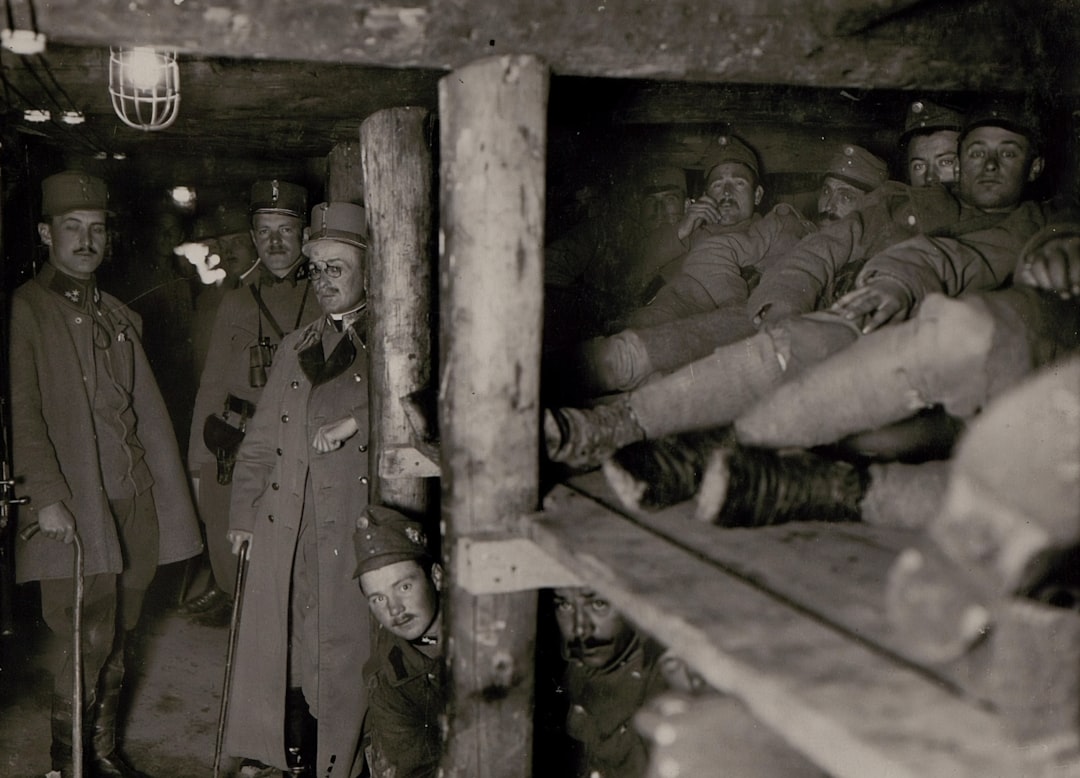The historical relationship between Britain and Mysore is a complex tapestry woven through a series of military confrontations, political alliances, and economic interests. The Kingdom of Mysore, located in southern India, emerged as a significant power in the 18th century under the leadership of rulers such as Hyder Ali and his son, Tipu Sultan. The British East India Company, initially focused on trade, found itself increasingly drawn into the political machinations of Indian states, including Mysore.
The relationship began to take shape in the mid-18th century when the British sought to expand their influence in India, often at the expense of local rulers. Hyder Ali’s rise to power marked a turning point in this relationship. As he consolidated his control over Mysore, he became a formidable opponent to British expansion.
The British viewed him as a threat to their interests in southern India, leading to a series of confrontations that would define their interactions for decades. The First Anglo-Mysore War (1767-1769) was the initial clash, where the British, allied with the Marathas and the Nizam of Hyderabad, faced off against Hyder Ali’s forces. Although the war ended inconclusively, it set the stage for future conflicts and highlighted the growing tensions between British imperial ambitions and local sovereignty.
Key Takeaways
- Britain and Mysore had a complex historical relationship marked by both cooperation and conflict.
- The alliance between Britain and the Marathas was strategic and aimed at countering the growing power of Mysore.
- The Anglo-Mysore Wars had a significant impact on the political landscape of South India and the balance of power in the region.
- The British East India Company played a pivotal role in shaping the fate of Mysore and the Marathas through its economic and military influence.
- The Treaty of Mangalore marked a turning point in the relationship between Britain and Mysore, and its significance reverberated throughout the region for years to come.
- The legacy of British ties with Mysore and the Marathas continues to influence the cultural, political, and economic dynamics of South India.
The Alliance Between Britain and the Marathas
Roots of the Alliance
The British recognized that aligning with the Marathas could provide them with a crucial advantage against their common adversary, Hyder Ali of Mysore. This alliance was not merely a military partnership; it was also rooted in economic interests and territorial ambitions.
British Strategy and Maratha Divisions
The British East India Company capitalized on the internal divisions within the Maratha confederacy to forge alliances with certain factions while undermining others. This strategy allowed them to gain significant leverage over the Marathas, who were embroiled in their own power struggles.
The Second Anglo-Mysore War and its Aftermath
The Second Anglo-Mysore War (1780-1784) saw the British once again allied with the Marathas against Tipu Sultan, who had succeeded his father Hyder Ali. The Marathas’ involvement was crucial in this conflict, as they provided additional troops and resources that bolstered British military efforts. However, this alliance was fraught with tension, as both parties harbored ambitions that often clashed, leading to a complicated relationship characterized by both cooperation and rivalry.
The Impact of the Anglo-Mysore Wars

The Anglo-Mysore Wars had profound implications for both Mysore and British colonial ambitions in India. These conflicts were not merely military engagements; they represented a struggle for dominance in southern India that would reshape the region’s political landscape. The First Anglo-Mysore War ended with a treaty that restored the status quo but did little to resolve underlying tensions.
The subsequent wars escalated in intensity and scale, culminating in significant battles such as those at Pollilur and Seringapatam. The Second Anglo-Mysore War saw Tipu Sultan emerge as a key figure in resisting British expansion.
However, despite his initial successes, the war ultimately ended with British victory and the Treaty of Mangalore in 1784, which reaffirmed British control over certain territories while recognizing Tipu Sultan’s sovereignty over Mysore. The Third Anglo-Mysore War (1790-1792) further eroded Mysore’s power, leading to Tipu Sultan’s defeat and the eventual annexation of significant portions of his kingdom. The impact of these wars extended beyond immediate territorial gains; they also set a precedent for British colonial policy in India.
The conflicts demonstrated the effectiveness of British military organization and strategy while exposing vulnerabilities within Indian states. The weakening of Mysore paved the way for increased British influence throughout southern India, ultimately contributing to the establishment of British colonial rule across the subcontinent.
The Role of the British East India Company in Mysore and Marathas
The British East India Company played a pivotal role in shaping the political landscape of both Mysore and the Maratha Empire during the 18th century. Initially established as a trading entity, the Company gradually transformed into a powerful political force that sought to expand its territorial holdings through military conquest and strategic alliances. In Mysore, the Company’s interactions were characterized by both conflict and diplomacy as it navigated its relationship with local rulers.
In Mysore, the Company’s ambitions were met with fierce resistance from Hyder Ali and later Tipu Sultan. The East India Company employed various tactics to undermine these rulers, including forming alliances with rival factions within Mysore and leveraging local grievances against them. This approach not only facilitated military campaigns but also allowed the Company to present itself as a stabilizing force amidst local turmoil.
In contrast, its dealings with the Marathas were marked by a more complex interplay of cooperation and competition. The Company often exploited divisions within the Maratha confederacy to gain advantages, aligning with certain leaders while isolating others.
By controlling trade routes and imposing taxes on local populations, the East India Company amassed considerable wealth that fueled its military campaigns. This economic dominance further entrenched its political power, allowing it to dictate terms to local rulers and expand its influence across vast territories. The legacy of this period is evident in how it laid the groundwork for British colonial rule in India, fundamentally altering the region’s socio-political fabric.
The Treaty of Mangalore and Its Significance
The Treaty of Mangalore, signed in 1784, marked a significant turning point in the relationship between Britain and Mysore during a tumultuous period characterized by conflict and shifting alliances. This treaty concluded the Second Anglo-Mysore War and established terms that reflected both sides’ interests while acknowledging Tipu Sultan’s sovereignty over Mysore. It was significant not only for its immediate impact but also for its long-term implications on British colonial policy in India.
Under the terms of the treaty, both parties agreed to restore captured territories to their rightful owners, effectively returning Mysore to Tipu Sultan after years of conflict. This restoration was crucial for Tipu Sultan as it reaffirmed his authority over his kingdom at a time when his position was precarious due to ongoing hostilities with neighboring states and internal dissent. For Britain, while it did not achieve complete dominance over Mysore, it secured a temporary peace that allowed it to focus on other strategic interests in India.
The Treaty of Mangalore also highlighted the limitations of British military power at that time. Despite their victories, they could not completely subdue Tipu Sultan or eliminate his resistance to British expansion. This realization prompted a reevaluation of British strategies in India, leading to more aggressive policies in subsequent conflicts.
Ultimately, while the treaty provided a temporary respite from hostilities, it foreshadowed further confrontations that would culminate in the eventual annexation of Mysore following Tipu Sultan’s defeat in later wars.
The Legacy of British Ties with Mysore and Marathas

Political Legacy: The Rise of British Colonial Rule
The weakening of both Mysore and Maratha power facilitated British expansion across southern India. The decline of these once-mighty kingdoms allowed for greater consolidation of British authority, which would eventually lead to direct governance over vast territories following the 1857 rebellion against colonial rule. This shift fundamentally altered governance structures in India, replacing traditional systems with colonial administrative frameworks that prioritized British interests.
Social and Cultural Impact: Nationalism and Resistance
Socially and culturally, the legacy is equally profound. The conflicts between Britain and local powers fostered a sense of nationalism among Indian leaders who sought to resist colonial domination. Figures like Tipu Sultan became symbols of resistance against imperialism, inspiring future generations in their struggles for independence.
Economic Consequences: Exploitation and Underdevelopment
Additionally, these historical interactions contributed to a complex cultural exchange that influenced art, architecture, and societal norms within both Indian and British contexts. Economically, the exploitation of resources during this period set precedents for colonial economic policies that prioritized extraction over local development. The consequences of these policies are still felt today as regions grapple with issues related to economic disparity and underdevelopment stemming from centuries of colonial exploitation.
In summary, the historical relationship between Britain and Mysore, along with their interactions with the Marathas, has left an indelible mark on India’s trajectory. Understanding this legacy is crucial for comprehending contemporary socio-political dynamics within India as well as its historical narrative shaped by colonial encounters.
In exploring the historical ties between Britain and India, one cannot overlook the intricate relationships with Mysore and the Marathas. These alliances and conflicts played a crucial role in shaping the colonial history of the subcontinent. For a deeper understanding of the dynamics of such relationships, one can delve into the article on the philosophies of Tagore and Radhakrishnan, which delves into the humanistic and intuitive aspects of these historical interactions.
FAQs
What were the British ties with Mysore and Marathas?
The British had complex and often contentious relationships with both Mysore and the Marathas during the 18th century in India.
How did the British interact with Mysore?
The British and Mysore engaged in a series of wars and alliances, with the most notable being the Anglo-Mysore Wars. These conflicts were driven by territorial ambitions and control over trade routes.
What was the nature of the British relationship with the Marathas?
The British had a similarly complex relationship with the Marathas, engaging in both alliances and conflicts. The Marathas were a powerful confederacy of states in western India, and the British sought to expand their influence in the region.
What were the outcomes of the British interactions with Mysore and the Marathas?
Ultimately, the British were able to gain significant territorial and political control over both Mysore and the Marathas, leading to the establishment of British colonial rule in India. This laid the foundation for the British Raj.






















+ There are no comments
Add yours